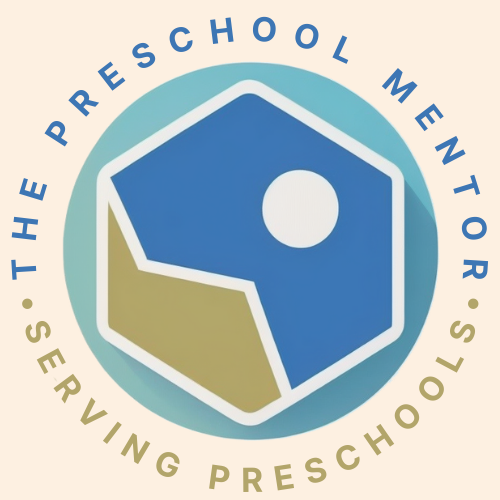Experts have pinpointed specific areas of cognitive development that are supportive of the interactions of infants with their environment through sensorimotor processes and their innate curiosity to find out how the world works.
Concepts Learned in Infancy
Following are some of the concepts that infants begin to learn early on in their lives.
Cause and Effect
We know that infants learn about their environment and themselves through their five senses. They actively move so that they can touch, see, mouth, and hear what is going on around them. This helps them to understand the relationship of cause and effect. An infant learns that he or she can make something happen through physical actions. Some of the activities that support this understanding include the following:
- Making eye contact with and responding to the cries and coos of the infant
- Toys that light up or make noise when the infant touches them
- Rolling a ball to the infant for him/her to push or kick
- Rattles/bells/other objects that can be held/manipulated by the infant to make something happen
Object Permanence
Object permanence is the thought that something still exists even when you can’t see it. A very young infant does not have the capacity to understand that when their caregiver/parent/preferred object is still around if they can’t see it. However, over time, this concept is developed through games such as the following:
- Hiding a stuffed animal under a blanket
- Playing peek-a-boo
- Rolling a car or ball under a box and then picking up the box to find the car or ball
Spatial Relationships
Learning about spatial relationships refers to the development of understanding how objects are related to the space around them. Things such as discovering their own hands at about three months or watching/attempting to push a ball around at about six months is one of the ways that infants learn how things fit/work around them. They start to explore how things feel/move in their hands and visually watch people as they move around them. This helps them to develop an awareness of space and movement. Some of the ways you can support the development of spatial awareness are:
- Holding a cup in one hand and putting it down to pick up something else
- Dropping food from their highchair
- Placing items in a container and then dumping them out over and over
Problem Solving
Recent research has indicated that infants function at a much higher level than previously thought when it comes to problem solving. After all, learning how to cry or gesture to get what they want is a very early form of problem solving. As infants gain more control of their hands/arms, they learn how to reach out to pick up toys or how to move one toy to get to the one they want behind it. In addition, another early form of problem solving is vocalizing to get the attention of their caregiver when they want something. Activities that support the development of early problem solving includes:
- Pulling on a string attached to a toy to get it closer to them
- Shaking a rattle or toy to hear sounds
- Kicking a toy/mobile to make it move
Imitation
Imitation is a very powerful part of the cognitive development and learning of an infant. Infants learn how to imitate the facial expressions and even head movements of their caregivers. Infants have the capacity to imitate immediately or to have what is known as delayed imitation, which is when an infant performs a behavior that he or she previously observed at a later time. Imitation is an integral part of all of the areas of an infant’s development: physical, social-emotional, and cognitive. In order to help infants practice this concept, you should do the following:
Play games such as peek-a-boo and simple finger plays to encourage the infant to copy your actions
Talk/interact with the infant during diaper changes, feedings, and play time
Memory
Development of memory means that the infant learns to distinguish between familiar and unfamiliar adults and starts to anticipate their daily routines and positive interactions. It has been proven that infants as young as 3 months are able to recall information from a previous time. As the infant gets older, he or she is able to remember things for a longer time. In order to assist infants in improving their memory skills, some suggestions for activities are:
- Hiding an object partially and having the infant “find” it
- Hiding an object under 1 of 2-3 containers and having the infant find it
- Reading a book over and over and naming familiar objects on each page (this not only facilitates the development of memory, but also literacy and language skills)
As you can tell, there are lots of things actively processing in the mind of an infant- even from birth. By creating a safe, secure, and appropriate environment for the infant, you can allow him or her to explore the world through their physical actions and senses- which helps facilitate their cognitive development. Following, you will find some age-specific activities to help promote this development from birth through age 1.
Activities to Promote Brain Development in Infants through Age 1
When you are working with infants, you must keep in mind that activities that are simple, meaningful, fun, and developmentally appropriate help to facilitate brain development in all areas. Following are some research-based activities that have been proven to nurture an infant’s brain and help him or her grow.
As a caregiver, it’s important to note that the brain grows/develops at a much more rapid pace during the first three years of life. An infant begins to interact with the world around them from the time they are born. Through their five senses, they begin to take in and process information and try to determine how they can exist in their environment.
An infant’s brain is made up of a hundred billion cells known as neurons, which make millions of connections are and the basis for cognitive development. When an infant is given an environment that facilitates learning through physical interactions and senses, these connections are triggered.
As a caregiver, you play an integral role in the support and promotion of this cognitive development through play and interaction. Experts have referred to play as the “work” of children.
Birth through 6 Months
Rocking
By swinging the infant side-to-side, you facilitate an awareness of body and space. Hold them on both their left and right sides so that he or she is able to experience touch on both sides of their body equally. In addition, rocking places the infant the perfect distance to gaze at the face of their caregiver.
Music
An infant’s hearing pathways are developed much more than their vision pathways. Therefore, it’s a good idea to frequently play soft, smooth music and/or nature sounds to support the development of sound recognition and development of hearing.
Massage
By massaging the infant, you help stimulate his or her central nervous system. Slowly massage the infant to assist in the maturation of the pathways. Use lotion and lay baby on a warm towel. Make sure that you always talk gently or sing while massaging. Tummy time is a great tool to use throughout the first year of the infant’s life.
Face Time
Look into the infant’s eyes while you talk to him or her. There are some researchers that say the vision of an infant is about eight to twelve inches away. Make a variety of facial expressions for the infant to imitate (see “Imitation” section above) such as sticking out your tongue and smiling. Eye contact helps to strengthen the infant’s vision/brain connections. Research has indicated that eye contact is the first attempt at an infant’s communication and a healthy baby’s brain will engage when looking into someone’s eyes.
6 Months through 1 Year
Explore/Touch
Allow the infant to explore their environment with toys that make sounds and have lots of color. Cause and effect (see above) toys teach infants that they are able to make something happen on their own. This makes them curious and helps to support attention to task. Toys such as rattles, light-up/musical toys, and pots/pans are great ways to support exploration and sensory play.
Get Moving
Set up some pillows to encourage the infant to crawl and climb. Call him or her from across the room (instead of physically moving him or her) to give them motivation to move. The first step to “crusing” (walking sideways while holding on to furniture) is pulling up from a sitting to a standing position using a piece of safe furniture. Put his or her favorite toys on top of a small table to encourage them to climb and reach.
Figuring Things Out
Give the infant a container with a hole and give them small objects to place in the hole- make sure the objects are large enough to avoid a choking hazard. Help the infant to figure out how to get the toys back out such as taking the lid off or pulling the objects out of another hole. One of the best way to include problem solving in this activity is shape sorters and stacking/nesting blocks. Large piece puzzles and matching games are a great idea too.
Dance
You can help facilitate the development of hand/arm control, trunk control, discrimination of sounds, and body awareness by bouncing in rhythm to music and shaking simple instruments. You can play a variety of both slow and fast music to help baby differentiate and move their body accordingly. Additionally, infants love simple finger plays and rhyming songs- these can help teach them pre-literacy skills.
Peek-a-boo
Playing peek-a-boo with an infant helps further develop the concepts of imitation and object permanence. Surprise the infant and make funny faces. Eventually, the infant will begin to anticipate and be aware of what you are about to do. He or she is likely to begin to imitate you by covering his or her own face. Another way to keep things interesting and fun is to set up a mirror for the infant to play in front of.
No matter what you do, the objective is to have fun. Active movement of infants is the foundation for early learning and exploration. Learning to use their senses and learning by doing facilitates cognitive development.
Image Credit: thespeechies.com


Leave a Reply